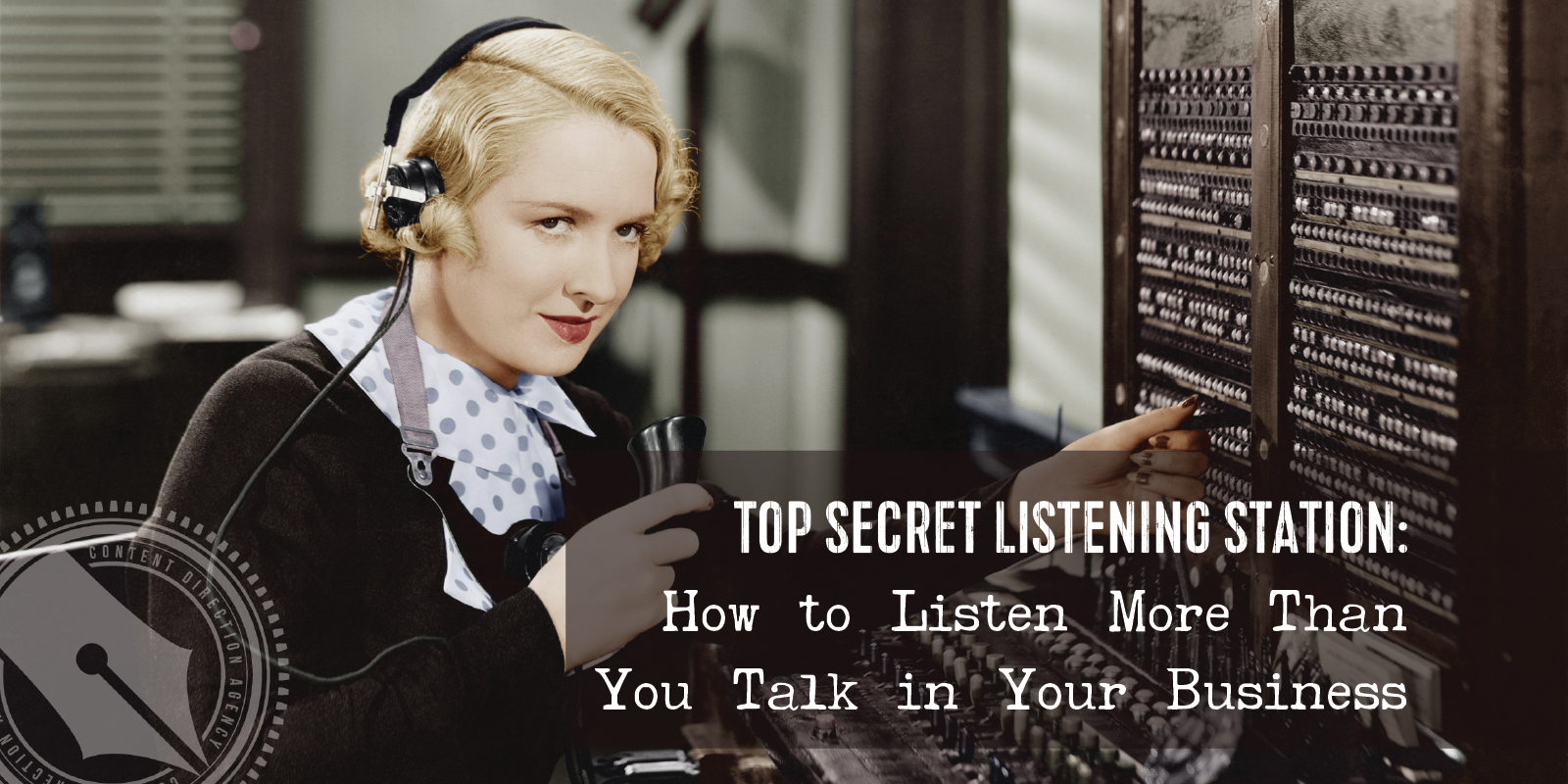Have you ever had the feeling that the universe was trying to tell you something?
Every once in a while, I feel like the universe is beating me over the head with some message or other.
Once, when I was living in Southern California, I was feeling really self-conscious about my body as I lounged by the apartment complex pool, when a man walked up, unstrapped both of his prosthetic legs, and dove into the pool. I hid my tears behind my sunglasses and though, OK universe! I get it! Be thankful for what I’ve got. Message received!
Another time, it was as though everything around us stopped as my father, who was dying of leukemia at the age of 64, told me how pissed off he was that he’d waited his whole life to do what he wanted to do when he retired, and six months into his retirement, he got sick. That one couldn’t have been more clear if it had been in flashing neon lights.
So I’m kind of a believer in listening when the universe wants to tell me something.
Lately, the universe has been talking about just that — listening. Several smart business marketers that I admire and respect have been talking about the power of listening in your business.
When we talk about marketing, often our first impulse is to think about broadcasting. What’s the message, what’s the medium? How do we create more content? How do we promote it?
But really, the best marketing starts with the marketer who is smart enough to sit back and listen.
Writing for the one versus the many
I was chatting with Joanna Wiebe of Copyhackers a couple of weeks ago and she said that even though we may have the potential to reach more people than ever before with Internet marketing, we’re not writing for the masses — we’re writing for just one person.
We are none of us Coca-Cola or WalMart — we can’t try to speak to a huge audience with our marketing. It just won’t work.
Instead, the best strategy is to try to speak to one specific person. Maybe there are actually a dozen of her out there, maybe several hundred — but we’re only writing to that one version.
And to understand her, you have to listen to her.
What’s fascinating is that this works whether you’re selling 1:1 or to groups, whether you’re selling a product or a service. You can connect with individuals who either truly are your ideal customer (as in, they are likely to make a purchase) or can stand in as an avatar for her.
And when you truly understand her through listening, you won’t have to “sell” her on anything — she’ll come to you.
I’ve created a template for a “Recording Station” to help you record all this juicy info you’re listening for. If you’d like to grab it for free by joining our free resource library — click here.
Here’s what to listen for:
Listen for connections
What do you have in common with your potential customers? Do you belong to the same groups? Read the same books? Subscribe to the same magazines?
I’ve been shocked by the number of people who have spoken up since I added my love of Harry Potter to my autoresponder emails. I’m tapping into a deep cultural love that people of my generation in particular can rally around.
Listen for buying signals
People love to rant and rave online — and they’ll also talk about what’s working and what’s not long before they start looking for help.
If you can identify people at this stage of the customer awareness spectrum, you can more quickly and easily move them along your path to sales.
The best example of this in my world is Facebook groups. I often see business owners asking questions about blogging, lamenting how long it takes, or complaining that they have no idea what to write about. Not one of them is asking, “How do I put together an editorial calendar?” but I know that’s the solution they probably need. I’ve identified those as signals that they might be ready to buy my Content Intelligence Academy course soon.
What are some of the signals that your ideal clients might be ready to buy from you?
Listen for changes that could spell opportunity
It’s kind of a sad truth about human nature that we’re not good at tackling problems proactively — we wait until we have a pain before we try to correct it.
But often, there are changes that signify we may be looking for that solution soon.
Think about what kinds of changes your ideal customer might go through right before she needs your service. For me, someone might be starting a new business, a new website, or taking their business to the next level. They might be ready to start a blog or restart one that’s stalled.
I have a friend who offers coaching for women working through divorce — so she has a very distinct change she’s listening for with her potential clients.
Listen to stay informed
Apart from listening to the customers themselves, we have to listen to what they are listening to, and stay informed about what might be top of mind for them.
For example, if you work with a particular industry like doctors or lawyers, you might subscribe to the industry association websites and newsletters. Even if you’re not a doctor or a lawyer yourself, it pays to know what your potential customers are hearing and thinking about.
This might also include listening to your “Frenemies” (we don’t use the word competition around here). It’s important to know what messages your potential customers are hearing from them as well.
Listen to add value
Finally, if you can listen to all the information that’s being delivered out there around your topic, and then aggregate and curate that information to your customers so that they can focus on just what’s important (instead of wading through it all themselves) you’ll be doing them an invaluable service.
We already do this to some extent on our social media channels, but ask yourself: how much of what you share is truly intentional? Useful? Important?
To become a trusted source, you have to become the rigorous filter through which only the best information passes.
How to use what you hear
Think of yourself as the undercover agent, holed up in an empty apartment, office, or hotel room, diligently listening to your target waiting for those nuggets of information that will allow you to act.
That’s what you can be doing every day as part of your marketing strategy:
- Set up your listening stations. Where will you listen in? Some suggestions include Facebook groups and comments, Twitter, Instagram comments, Amazon or Yelp reviews, industry forums, newsletters, blogs, etc.
- Set up your recording station. I’ve created a simple document where you can record your observations, which you can grab in our free resource library, but you could also use your CRM software or any other note-taking application you’re already using. Remember: you don’t have to fill out each column for every source. Whenever possible, copy and paste the potential customer’s exact words.
- Follow up on opportunities. Set aside time each week to follow up on specific opportunities. That might mean sending emails, introducing yourself in groups, answering questions, or sending out proposals. But make it an appointment on your calendar, and do it regularly.
- Use your insights in your copy. One of the most powerful ways you can use this information is to echo your customers’ own words back to them in your copy — for your website, your blog, your emails, and your sales pages.
If you’re serious about taking your marketing to the next level, spending even an hour a week on strategic listening and following up can have an enormous impact on your business and your bottom line.
 Are you interested in learning more about how to spy on your readers (nicely!)?
Are you interested in learning more about how to spy on your readers (nicely!)?
It’s an entire module in my program, Content Intelligence Academy!
Click here to learn more.


Hey Lacy, I’ve always been interested in this topic. There are so many ways to listen in on your target audience these days. Even if you don’t have a list and are starting fresh, there are Facebook groups and amazon eBay, youtube comments, reddit…lots of avenues to gauge what they are talking about and what they need and want. One thing that I’ve been curious about is this…If people have trouble doing something and say they do, and you address that’ and deliver a lead magnet or product, but they don’t take it? Is that because of perhaps the way the product or lead magnet is positioned or perhaps sometimes people say they have trouble with something but don’t want to fix that badly enough? Human beings are not exactly rational beings. Does that make sense? Just wanted your take on it.
Hi Meera! Very often people SAY one thing and DO another. And so often we have to sell them what they WANT and give them what they NEED. So it’s probably a positioning issue as you say. Take a weight loss example: people want to lose weight, but they don’t really want to hear that it’s going to be hard work, eat less food, workout more, etc. But when you sell them the idea that they will lose 12 pounds in a week (or whatever) THAT’s what they want. And then you give them the hard work they need.
Yes to a Listening resource by Lacy 🙂 This would be fabulous.
Awesome!
I’m definitely interested in learning more about how to set up a listening station!
Great! I will work on it.
Hi Lacy,
thanks for this great article.
I would love to learn more about strategic listening, especially how to find out where my tribe is hanging around in social media.
Cheers!
Sue
Great, Sue! I’ll work on it.
I can see how this would be so beneficial in my business and as I consider what new products to launch. Thanks!
Awesome!
I’m definitely interested in a training!
Great!!
I love the focus on listening! As entrepreneurs, we have so much that we want to share that it’s easy to forget that in order for our knowledge to be the most useful to others, we need to listen to them! 🙂